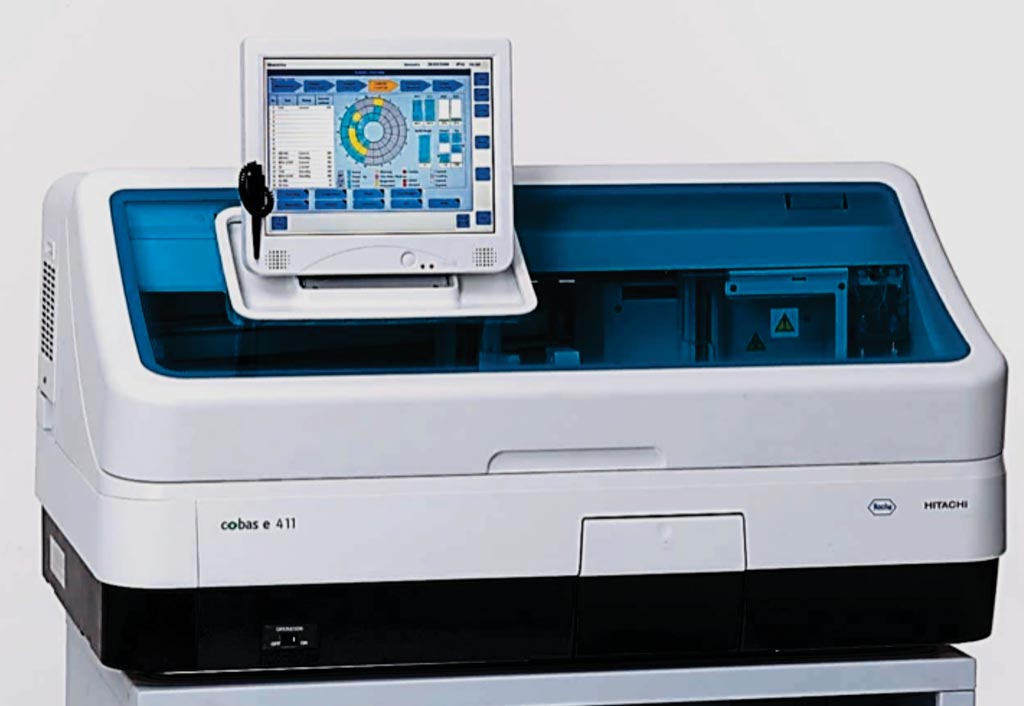Performance of Immunosuppressant Drug Assay Kits Analyzed
By LabMedica International staff writers
Posted on 08 Aug 2017
Cyclosporine (CsA) and tacrolimus (TAC) are immunosuppressant drugs that are often used to treat autoimmune diseases and as transplantation therapy and therefore, their concentrations need to be monitored carefully.Posted on 08 Aug 2017
The main analytical methods for CsA and TAC in whole blood have been liquid chromatography combined with mass spectrometric detection (LC-MS/MS), affinity chrome-mediated immunoassay (ACMIA), and chemiluminescence immunoassays (CLIA).

Image: The cobas e 411immunoassay analyzer (Photo courtesy of Roche Diagnostics).
Scientists at the Osaka University Hospital (Osaka, Japan) used 200 residual EDTA whole blood samples from patients who had received an organ transplant and were under CsA or TAC therapy. CsA concentrations were measured using an affinity chrome-mediated immunoassay (ACMIA) and an electrochemiluminescence immunoassay (ECLIA). TAC concentrations were measured using a chemiluminescence immunoassay (CLIA) and ECLIA.
The investigators used the Elecsys Cyclosporine assay kit and the Elecsys Tacrolimus assay kit where the concentrations were measured on a cobas e411 analyzer. The ACMIA for measurement of CsA concentration was performed with a Dimension Xpand analyzer and CLIA for measurement of TAC concentration with an ARCHITECT i2000SR. It was necessary for accurate measurements of CsA and TAC concentrations to sufficiently mix samples and pretreatment reagent. The hematocrit was assayed using the fully automated hematological analyzer Sysmex XN-1000.
The scientists investigated assay precision, linearity, lower limit of quantitation (LOQ), stability of calibration, influence of interference substances and the hematocrit, correlation of ACMIA with ECLIA, and correlation of CLIA with ECLIA. They found that the limits of quantitation (LOQ) were defined as the concentration at which the coefficient of variation (CV) was approximately 10%. Each lower LOQ obtained was 16 ng/mL (CsA), and 0.95 ng/mL (TAC). CsA and TAC calibrations were stable for at least 21 days. Neither the presence of conjugated bilirubin, unconjugated bilirubin, chyle, and rheumatoid factor nor the hematocrit affected these assays.
The authors concluded that the analytical performances of the Elecsys Cyclosporine and Elecsys Tacrolimus assays were acceptable. Furthermore, CsA and TAC concentrations may be simultaneously measured using a single pretreatment, which is of benefit if patients have to undertake conversion between these two drugs. Additionally, it benefits the workflow in the clinical laboratory. The study was published in the August 2017 issue of the journal Practical Laboratory Medicine.













